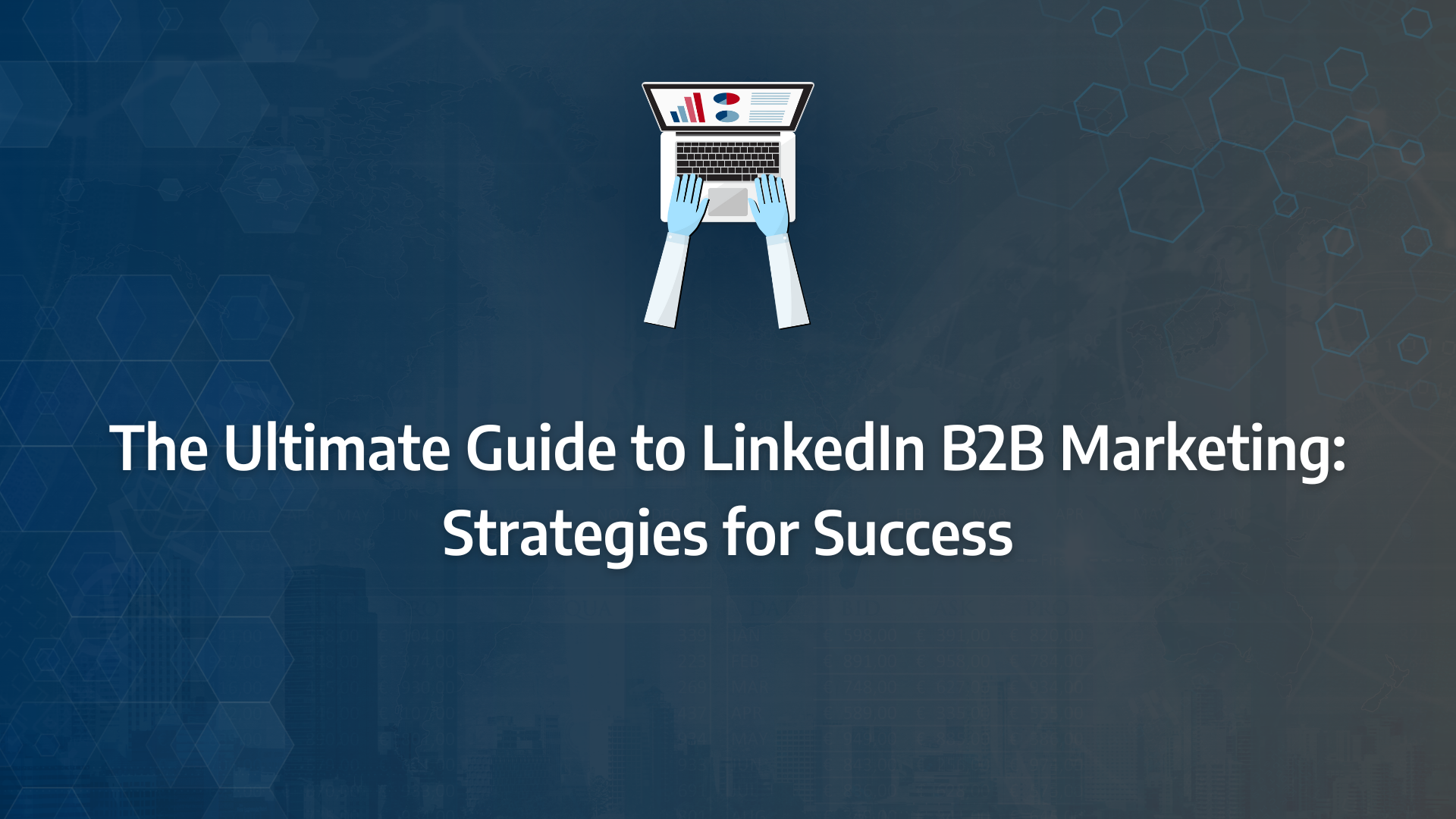LinkedIn has emerged as the go-to platform for B2B marketers, with its unparalleled ability to connect businesses with key decision-makers. But how do you ensure your brand doesn’t get lost in the noise? In this comprehensive guide, we delve into LinkedIn B2B marketing strategies that leading brands like IBM and Microsoft have used to achieve remarkable success.
You’ll discover proven tactics to optimise your LinkedIn profile, create engaging content, and leverage LinkedIn Ads to reach your ideal audience. Whether you’re looking to boost your brand’s visibility or generate high-quality leads, this guide provides the actionable insights you need to harness LinkedIn’s full potential.
- Optimise your LinkedIn profile to make a strong first impression and attract the right audience. A well-crafted profile is the foundation of your LinkedIn marketing success.
- Develop a targeted LinkedIn content strategy that resonates with your B2B audience. Focus on creating value-driven content that engages and informs.
- Leverage LinkedIn Ads to reach decision-makers with precision. Understand how to use LinkedIn’s advanced targeting features to maximise your campaign’s impact.
- Join and actively participate in LinkedIn Groups relevant to your industry. Engaging in these communities can enhance your brand’s visibility and authority.
- Integrate LinkedIn into your broader B2B marketing strategy to ensure consistency and reinforce your brand message across multiple channels.
How can I optimise my LinkedIn profile for marketing?
An optimised LinkedIn profile is essential for standing out in the competitive landscape of LinkedIn B2B marketing. Every element of your profile should be meticulously crafted to clearly convey your expertise, professional identity, and value proposition. A well-optimised profile not only enhances your visibility in LinkedIn searches but also fosters trust among those who might connect, follow, or engage with you.
What Matters Most?
Building a community around your brand on LinkedIn typically leads to authentic interactions that foster loyalty. From our experience, clients often discover that focusing on genuine engagement rather than just content broadcasting creates a more involved audience. Moreover, tailoring content to a targeted account list, with an emphasis on addressing specific pain points, allows for deeper connections with decision-makers. This strategy often yields significant returns. Finally, leveraging LinkedIn Groups to facilitate meaningful discussions can position your brand as a thought leader and enhance networking opportunities, which clients typically find invaluable for their growth.Get In Touch
Why You Should Optimise Your LinkedIn Profile
Optimising your LinkedIn profile is not merely a cosmetic exercise; it’s a strategic move that significantly impacts your professional opportunities and your effectiveness in a broader LinkedIn B2B content strategy. Here’s why a clean, comprehensive profile is crucial:
- Attracts Recruiters: A polished profile signals to recruiters that you are not only open to opportunities but also serious about your professional brand. This can lead to direct outreach for roles that align with your expertise.
- Differentiates You in Job Applications: When you apply for roles via LinkedIn, a fully optimised profile helps you stand out in a crowded field of applicants.
- Boosts Your Personal Brand: By presenting a strong, cohesive personal brand, you increase your chances of becoming an industry influencer, amplifying your reach and impact.
- Facilitates Social Selling: A well-optimised profile is a key tool in building relationships with prospects, nurturing leads, and ultimately closing deals, making it a cornerstone of any effective B2B LinkedIn strategy.
- Builds Trust with Customers: An authentic, transparent profile fosters trust, which is essential for building long-term customer relationships.
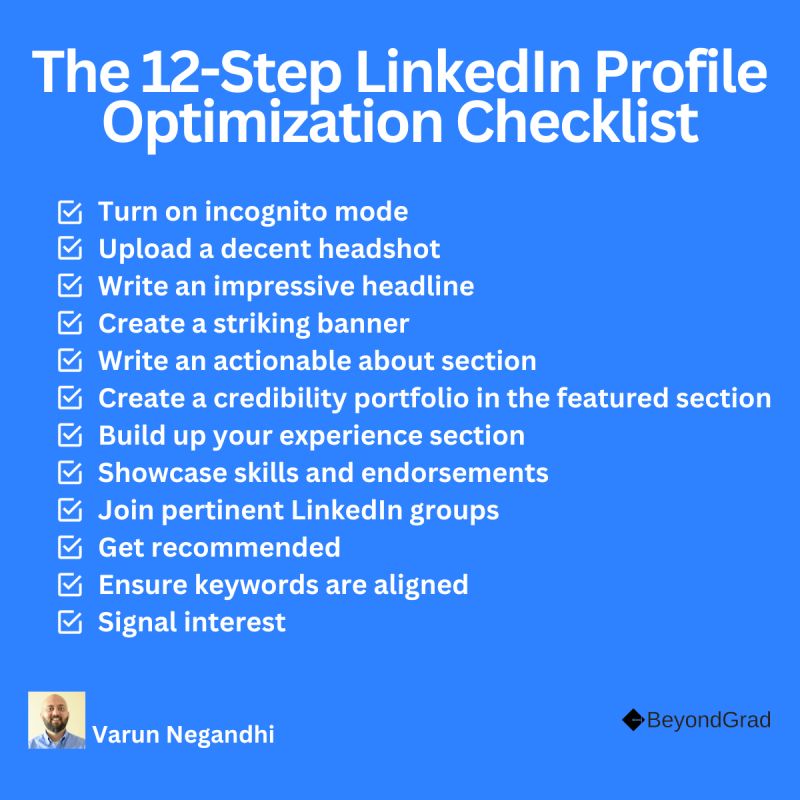
LinkedIn Profile Optimisation Basics
To maximise your LinkedIn presence, start with these foundational elements:
- Choose a Strong Profile Picture
Your profile picture is the first visual impression you make on LinkedIn, so it needs to be professional and high-quality. Ensure your image is clear, with your face prominently displayed, to build trust with your network and recruiters. The recommended size for a LinkedIn profile picture is at least 400 x 400 pixels. Additionally, adjust your privacy settings to make your image visible to all LinkedIn members or even publicly to enhance search engine discoverability.
- Utilise the Background Photo
Your background photo, often referred to as a banner image, is another opportunity to reinforce your professional brand. This image can reflect your work, passions, or the company you represent. To ensure optimal quality, use an image that is 1584 pixels wide by 396 pixels high, maintaining a 4:1 proportion. Customise this space to align with your LinkedIn B2B content strategy, whether through company-branded visuals or something more personal yet professional.
- Craft an Impactful Profile Headline
Your profile headline is a powerful tool for positioning yourself within your industry. Rather than simply stating your job title, use this 220-character space to highlight your key strengths, relevant keywords, and the value you bring to your role. For example, compare these two headlines:
- “Leader at EveryoneSocial | Social Seller”
- “Empowering Sales Leaders with Social Selling | VP of Sales at EveryoneSocial”
The second example is not only keyword-rich but also more engaging and descriptive, making it more likely to resonate with your target audience.
- Tell Your Story in the About Section
Your About section is your personal narrative—an opportunity to connect with your audience on a deeper level. In up to 2,000 characters, tell your story, focusing on what drives you, your core values, and your professional aspirations. Remember, the first 265-275 characters are critical as they appear before the “See More” prompt, so make these lines compelling to encourage further reading. Enhance this section by adding relevant media, such as documents, links, or videos, to showcase your expertise and reinforce your LinkedIn B2B marketing strategy.
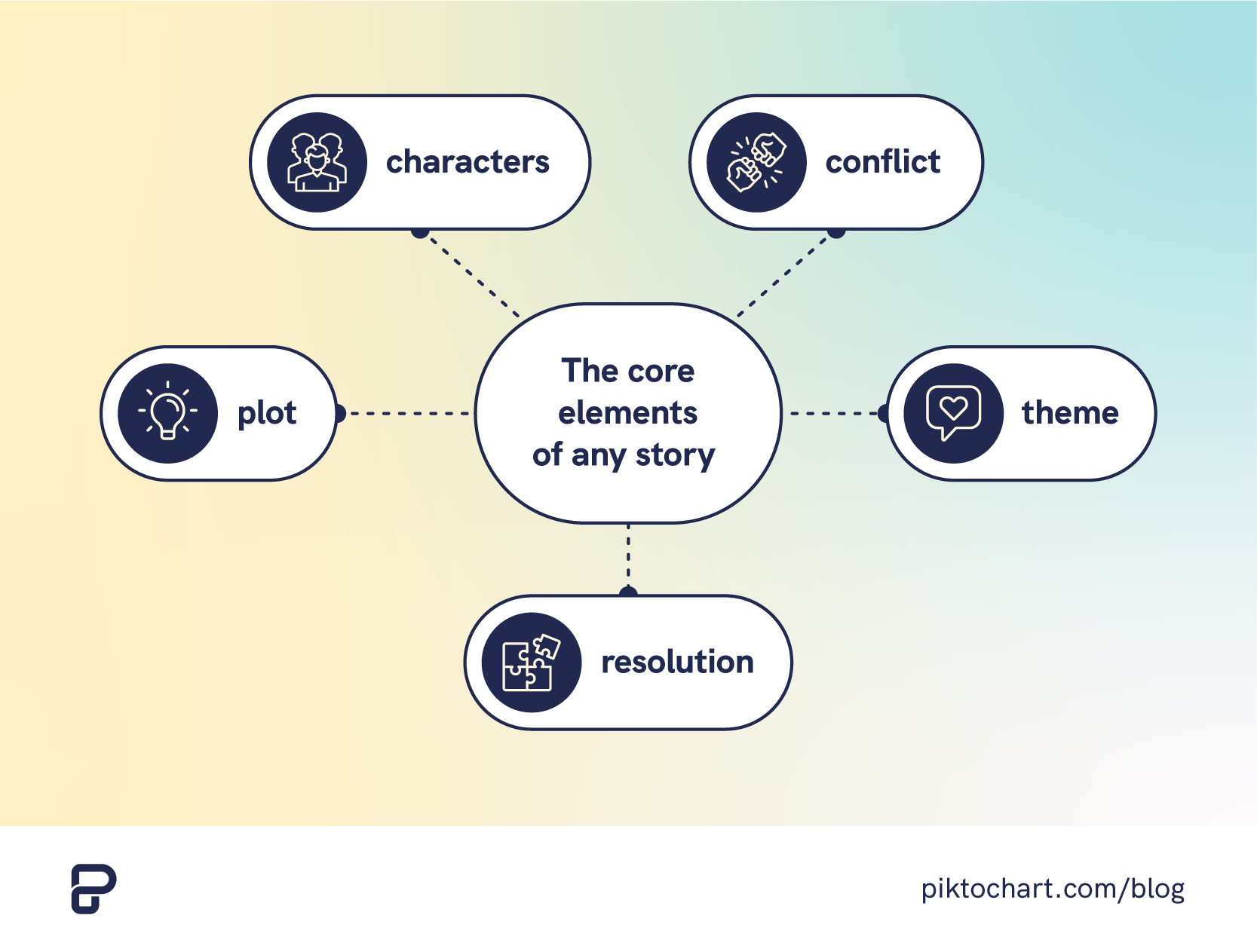
- Detail Your Work Experience
While LinkedIn profile optimisation involves more than just listing your work experience, this section is still vital. Highlight your key achievements in each role, focusing on those that best represent your skills and impact in your field. Avoid overloading this section with every past position; instead, prioritise roles that align with your current career goals. Regular updates to this section, especially when you achieve new milestones, will keep your profile fresh and relevant.
- Highlight Your Education and Skills
Your education and skills sections further reinforce your professional profile. Include your educational background, certifications, and key skills that align with your industry. Additionally, skills endorsements from your network can enhance your credibility, contributing to a stronger LinkedIn B2B marketing presence. While recommendations can be valuable, especially when job hunting, they are less critical in the broader context of an optimised LinkedIn profile.
By carefully crafting each section of your LinkedIn profile, you not only improve your visibility and credibility but also position yourself strategically within the B2B LinkedIn ecosystem. Remember, a well-optimised LinkedIn profile is more than a digital resume; it’s a dynamic tool for marketing yourself and your expertise in the competitive world of LinkedIn B2B marketing.
Source: Linkedin
Enhance Your LinkedIn Headline
Your LinkedIn headline is one of the first elements people notice when they visit your profile. It’s your digital handshake, so it needs to be compelling and clear. A well-crafted headline doesn’t have to be overly complex, but it must include essential keywords that make it easier for others to find you in LinkedIn searches. Moreover, it should succinctly convey what you do and the value you bring.
When crafting your headline, consider the following:
- Incorporate High-Volume Keywords: Select relevant keywords that will boost your visibility in search results, ensuring that your profile stands out in the competitive LinkedIn B2B marketing landscape.
- Provide a Clear Job Description: Your headline should instantly inform readers of your role and expertise, leaving no room for ambiguity.
- Highlight Your Industry: Specify the industry you operate in to help recruiters and potential clients quickly assess your fit for their needs.
Be creative with your headline, but ensure it includes all the critical information someone needs when they first view your profile. This careful balance between creativity and clarity will serve as a powerful component of your overall B2B LinkedIn strategy.
Create a Custom Vanity URL for Your LinkedIn Profile
If you’ve ever tried sharing your LinkedIn profile only to be met with a cumbersome string of numbers and letters, you’re not alone. This default URL can be confusing and unprofessional, especially when networking or sharing your details at events.
By creating a custom URL that includes your name or a distinctive feature of your business, you not only make it easier for others to remember and share your profile but also enhance your LinkedIn B2B content strategy. A personalised URL is also more likely to appear in search results when someone looks up your name, giving you an edge in SEO.
Utilise AI to Perfect Your LinkedIn Profile
Leveraging AI tools like ChatGPT can significantly enhance the quality of your LinkedIn profile, particularly when crafting your “About” section. A well-written summary is crucial in LinkedIn B2B marketing as it helps establish your professional narrative, making your profile more engaging and aligned with your target audience’s expectations.
How to Write a LinkedIn Summary Using ChatGPT
- Prepare Your Resume: Start by pulling up your most recent resume. This will serve as the foundation for generating a comprehensive LinkedIn summary.
- Input a Specific Prompt: Use a clear and direct prompt such as, “Write a LinkedIn ‘About’ section using my resume as a guide.” For a more tailored summary, you might ask, “Write a professional summary that highlights my work experience, includes key industry keywords, and stays under 150 words.”
- Refine and Personalise: Once you receive the AI-generated summaries, review them carefully. Pick out the elements that best represent you, and personalise the content to ensure it reflects your unique professional identity.
- Repeat and Optimise: Use AI to generate multiple versions of your summary. This allows you to blend the best aspects of each into a final version that resonates with your LinkedIn audience and supports your broader B2B LinkedIn strategy.
What are some best practices for B2B marketing on LinkedIn?
Crafting a successful LinkedIn B2B marketing strategy requires a nuanced approach to content creation and distribution. LinkedIn stands out as a platform that demands strategic precision to maximise engagement and build meaningful connections. Here are some best practices to optimise your LinkedIn B2B content strategy and elevate your brand’s presence on this vital platform.
LinkedIn Posting Tips for Maximum Engagement
Creating impactful content is essential for driving your LinkedIn B2B marketing success. However, the challenge lies in knowing how to effectively structure and time your posts. Here are some key strategies to ensure your content resonates with your audience and drives engagement.
- Determine the Optimal Posting Times
Understanding the best times to post on LinkedIn is crucial for maximising engagement. Like other social media platforms, LinkedIn experiences peak and off-peak traffic periods. Posting during high-traffic times ensures your content reaches a wider audience from the moment it goes live.
Utilising tools such as Clearview Social’s PeakTime™ can help you identify these optimal times across all your social media channels, including LinkedIn. By aligning your posting schedule with these peak periods, you set the stage for enhanced engagement and improved performance, integral to your B2B LinkedIn strategy.
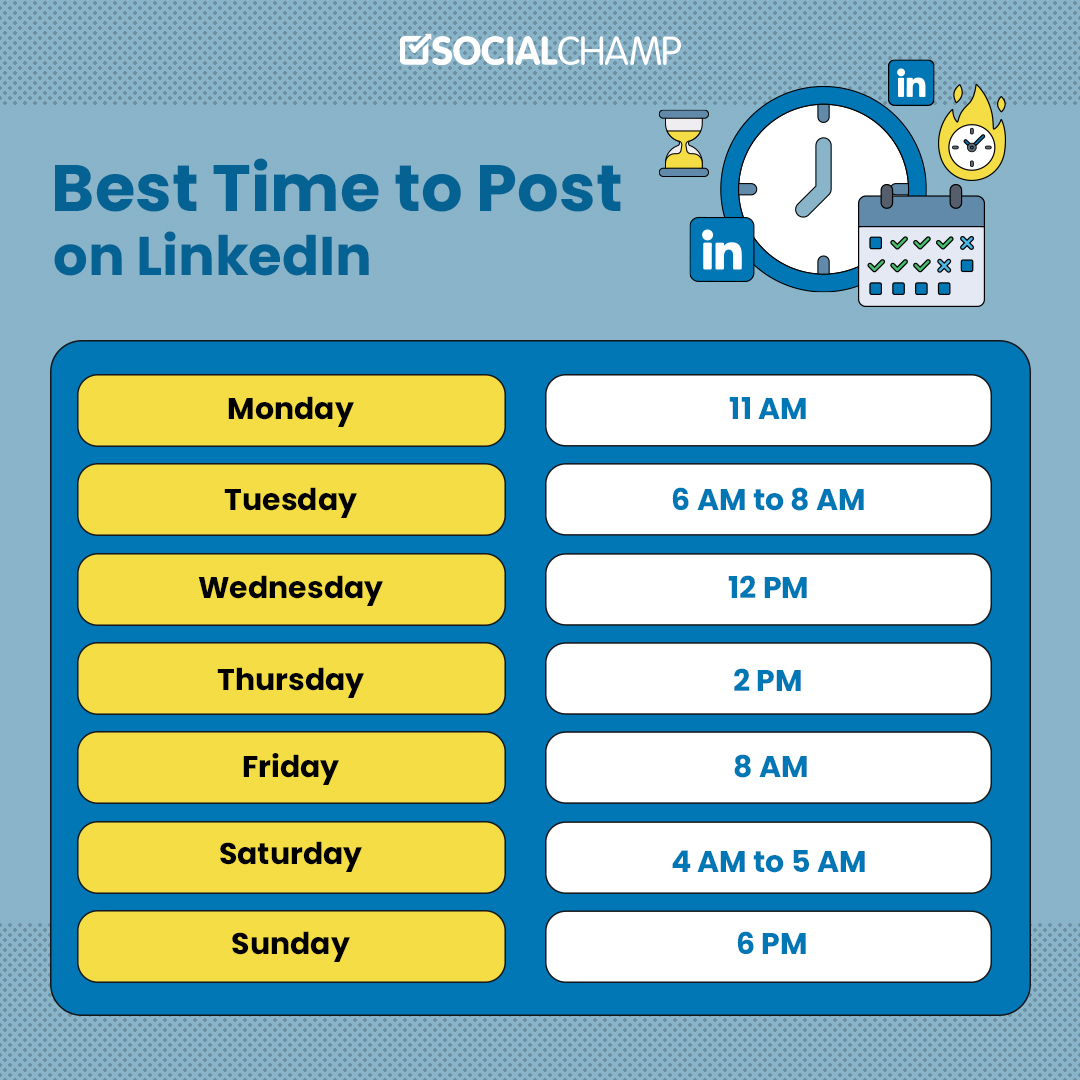
- Schedule Your Posts in Advance
Incorporating social media scheduling tools into your LinkedIn B2B content strategy is a game-changer. By planning and scheduling posts in advance, you streamline your content distribution process, allowing for batch creation and reducing the need to manage each post individually. This approach not only saves time but also ensures consistency, which is vital for maintaining an effective LinkedIn organic marketing strategy.
- Establish a Consistent Posting Routine
Consistency is key when it comes to building a loyal audience on LinkedIn. In addition to scheduling posts in advance, it’s important to establish a regular posting routine. For instance, some brands find that posting content every Tuesday and Thursday yields the best engagement rates. While you may need to experiment initially to discover the optimal schedule for your audience, maintaining a consistent posting rhythm helps foster a sense of anticipation and trust with your followers, strengthening your overall LinkedIn B2B marketing efforts.
Source: Content Marketing Institute
- Incorporate Long-Form Content Periodically
Varying the length of your content can add significant value to your LinkedIn B2B content strategy. While shorter posts are often more digestible, incorporating long-form content periodically allows you to delve deeper into complex topics, offering your audience more in-depth insights. This approach not only enhances your authority in the industry but also caters to different audience preferences, ensuring a broader appeal.
- Experiment with Different Content Formats
A diversified content strategy is essential for keeping your LinkedIn audience engaged. Don’t limit your B2B LinkedIn strategy to just text posts or occasional videos. Explore various content formats such as polls, infographics, profile pieces, and external links to discover what resonates most with your audience. By utilising a social media analytics tool like Clearview Social, you can track the performance of each content type, enabling you to refine your strategy and focus on what works best for your LinkedIn organic marketing strategy.
- Prioritise Original Content
Original, high-quality content is non-negotiable when building a strong LinkedIn B2B marketing presence. Authenticity and originality are key factors that capture attention and build trust among potential clients and industry peers. By consistently delivering unique content that speaks to your brand’s strengths and values, you not only stand out in a crowded marketplace but also foster deeper connections with your audience.
- Empower Employees to Advocate for Your Brand
Employee advocacy is a powerful tool in amplifying your brand’s reach on LinkedIn. Encouraging your employees to share company content and actively participate in LinkedIn discussions can significantly enhance your brand’s visibility and credibility. Implementing an employee advocacy programme, supported by tools like those offered by Clearview Social, can streamline this process. By empowering employees to become brand advocates, you not only increase their engagement and professional growth but also strengthen your company’s internal culture and external reputation.
Our Tactical Recommendations
Identifying decision-makers using LinkedIn’s advanced search features allows for highly personalised outreach strategies that resonate well with prospects. From our experience, clients often see increased response rates when they target specific individuals effectively. Additionally, testing various ad formats, particularly video and carousel ads, typically results in higher engagement rates. Clients discover that continuous analysis of performance metrics is key to refining their campaigns. Lastly, implementing employee advocacy programmes to leverage the networks of employees enhances content visibility, as we’ve seen clients benefit from increased trust and reach when their teams actively share brand content.Get In Touch
What are some common mistakes to avoid in LinkedIn marketing?
The smallest missteps can undermine the effectiveness of your campaigns. Understanding and avoiding these common mistakes is crucial to ensuring that your LinkedIn B2B content strategy is both efficient and impactful.
Mistake #1: Lack of a Clear Naming Structure for Campaigns
One of the most overlooked aspects of LinkedIn campaign management is the importance of a consistent naming structure. A well-organised naming convention is essential when running multiple campaigns simultaneously, as it allows you to quickly identify the focus of each campaign—whether it be the business line, product, targeting region, or ad format.
Often, beginners fall into the trap of relying on the default campaign names that LinkedIn generates, which typically consist of the selected objective and the date of creation. This approach can lead to confusion, especially when you have numerous campaigns with similar objectives but different targeting parameters. Imagine trying to analyse the performance of ten campaigns, all named similarly, without a clear distinction between them—it would be a nightmare.
To avoid this pitfall, implement a structured naming convention. A format such as “Objective_Country/Region_Targeting_Ad Format” can significantly enhance the clarity and manageability of your campaigns. This systematic approach not only saves time but also improves your ability to assess campaign performance accurately, a vital component of any effective B2B LinkedIn strategy.
Mistake #2: Using LinkedIn’s Audience Expansion Feature
While LinkedIn’s audience expansion feature might seem like a convenient tool to broaden your reach, it often leads to targeting inefficiencies. This feature automatically expands your audience based on the criteria you’ve set, potentially including profiles that do not align with your original targeting intent. For example, if you’re targeting the CEO of HP, the audience expansion feature might also target the CEO of Dell, even though your campaign’s focus is specifically on HP.
After managing hundreds of LinkedIn B2B marketing campaigns, it’s clear that this feature can dilute the precision of your targeting, leading to less qualified leads. For greater control over who sees your ads and how your budget is spent, it’s advisable to turn off audience expansion. By doing so, many clients have reported a 90% improvement in the accuracy of their leads and prospects, making this a crucial step in refining your LinkedIn organic marketing strategy.
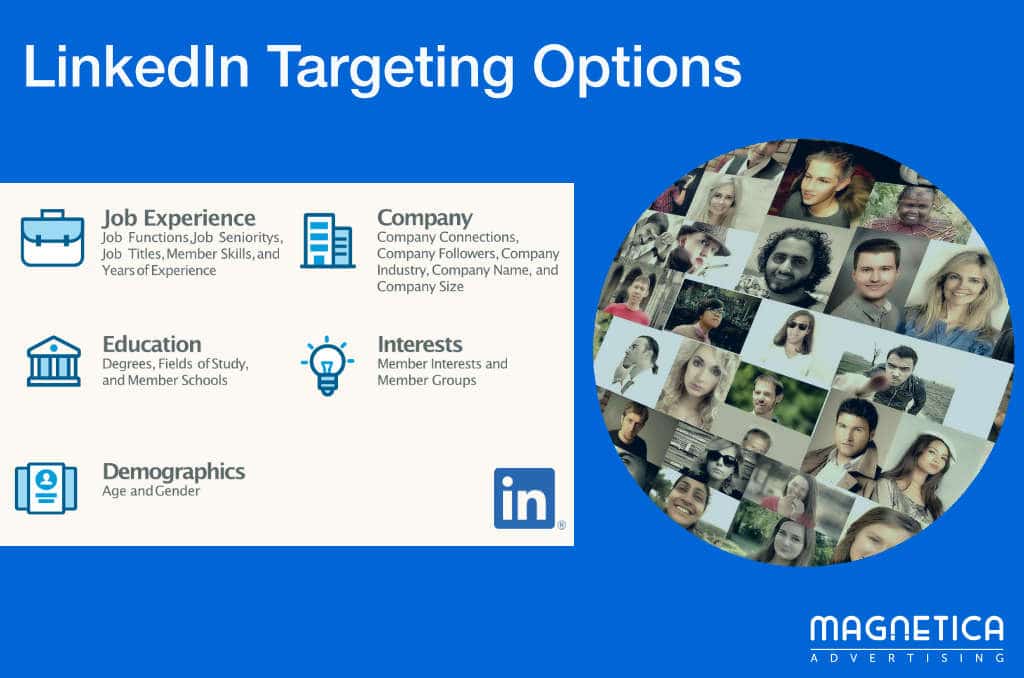
Mistake #3: Not Setting a Daily Budget
Another critical mistake is failing to set a daily budget for your LinkedIn campaigns. A daily budget allows you to start small, testing various targeting options, regions, and creative strategies before committing to a larger spend. This approach is particularly useful for identifying what works best for your audience, ensuring that your LinkedIn B2B content strategy is as cost-effective as it is impactful.
Start with a budget that enables at least 5-10 clicks per day. This level of engagement provides enough data over 7-10 days to analyse performance trends. Based on this analysis, you can then incrementally increase the budget for high-performing campaigns while optimising or discontinuing those that are underperforming. By continuously refining your approach in this way, you ensure that your LinkedIn B2B marketing efforts are always aligned with your strategic objectives and deliver maximum return on investment.
